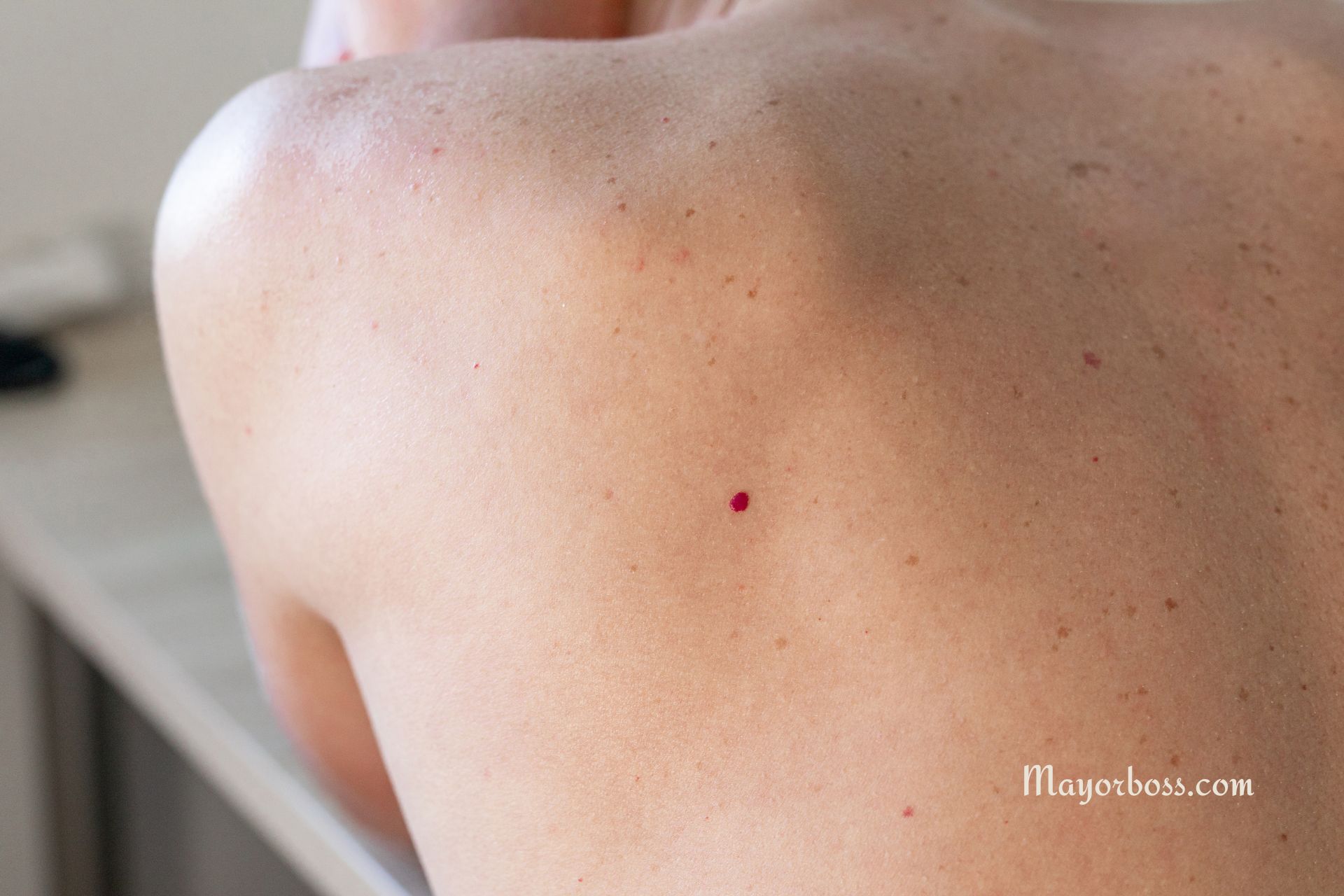What is a Cherry Angioma: Causes, Symptoms, and Remedies
Cherry angiomas, also known as Campbell de Morgan spots or senile angiomas, are among the most common skin growths found in adults. These bright red, dome-shaped spots might look alarming, but they’re entirely harmless. Let’s explore what they are, why they form, and if any treatment is necessary.

What Exactly is a Cherry Angioma?
A cherry angioma is a benign (non-cancerous) growth composed of a cluster of tiny blood vessels or capillaries. This concentration of blood vessels is what gives them their signature red color, which can sometimes become darker and appear purple or brownish with age. They can look flat in the beginning but often become slightly raised over time.
Where Do Cherry Angiomas Appear?
Cherry angiomas can appear virtually anywhere on the body, but they most commonly arise on the:
- Torso
- Arms
- Legs
- Shoulders
- Scalp
There may be just one, or there might be many clustered together.
Why Do Cherry Angiomas Develop?
The exact cause of cherry angiomas isn’t fully understood, but experts suggest these factors may play a role:
- Genetics: There seems to be a hereditary predisposition to developing cherry angiomas.
- Age: Their occurrence increases with age, particularly after the age of 30.
- Pregnancy: Hormonal changes during pregnancy can make women more susceptible.
- Chemical Exposure: Research suggests there may be a link between some chemicals and an increased likelihood of developing these red spots.
Symptoms of Cherry Angiomas
Cherry angiomas cause no symptoms other than their visible appearance. Their typical characteristics include:
- Size: Ranging from the size of a pinhead to about a quarter of an inch in diameter.
- Shape: They’re usually round or oval.
- Color: Bright red is most common, but it can be purple, blue, or almost black.
- Bleeding: If scratched or knocked, they can bleed easily due to the concentration of blood vessels.
Should You Be Worried?
No, cherry angiomas are nearly always harmless and require no treatment. However, it’s always wise to have a doctor or dermatologist examine any new skin growth to rule out other causes for concern.
Reasons to See a Doctor
While mostly an aesthetic matter, it’s generally a good idea to consult a doctor for the following reasons:
- Unusual Appearance: If a growth doesn’t fit the typical description of a cherry angioma.
- Sudden Changes: Changes in size, shape, color, or persistent bleeding warrant investigation.
- Frequent and Extensive Outbreaks: Multiple angiomas that suddenly appear might suggest an underlying medical condition.
Treatment Options for Cherry Angioma
Since they’re benign, treatment for cherry angiomas is primarily for cosmetic reasons if someone finds them visually unappealing. Common removal techniques include:
- Electrocauterization: Burning the angioma with an electric current.
- Cryotherapy: Freezing the angioma with liquid nitrogen.
- Laser Treatment: Using lasers to destroy excess blood vessels.
- Shave Excision: Cutting the angioma away with a surgical tool.
Can Cherry Angiomas be Prevented?
Unfortunately, there isn’t a known way to prevent them.
Frequently Asked Questions
1. Are cherry angiomas dangerous? No, they are almost always benign and cause no harm.
2. Do cherry angiomas go away on their own? Generally, no, and they often increase in number over time.
3. Can I remove a cherry angioma at home? No, please don’t attempt this yourself. See a doctor for safe and effective removal.
In Conclusion, Cherry angiomas are completely normal and common skin growths, especially as we get older. While harmless, you can discuss cosmetic treatments with your doctor if that interests you. And finally, if you notice any odd symptoms or sudden changes, always consult a qualified medical professional.
